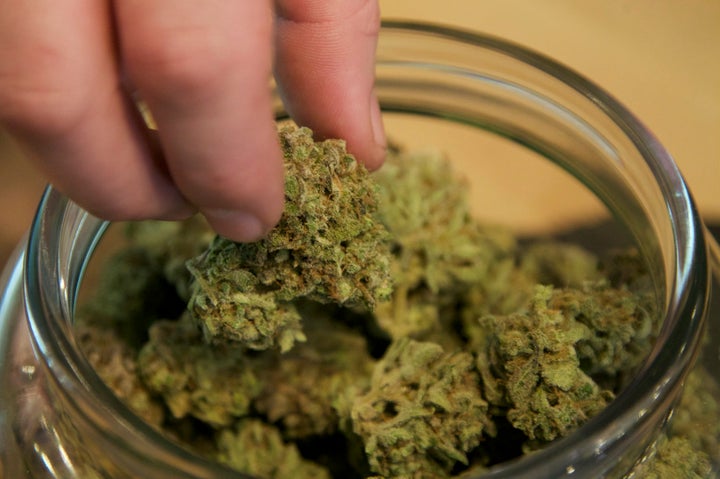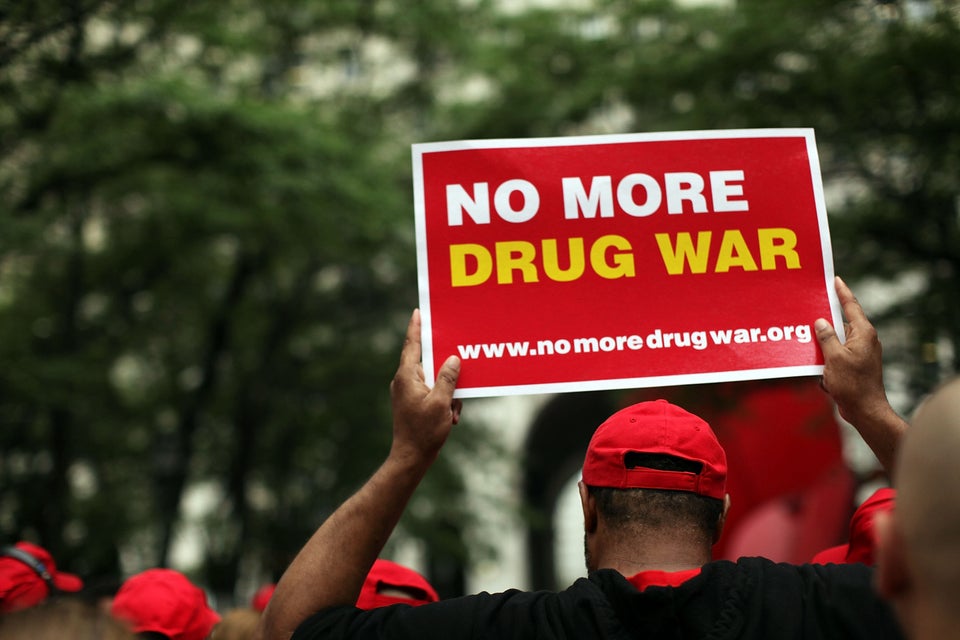
The abuse of marijuana by American youth has declined in recent years, even as adults’ embrace of the plant has continued to grow, according to a recent federal study.
The findings also suggest that the movement toward legalization and decriminalization of the plant in multiple states hasn’t necessarily increased young people’s access to marijuana.
The study, released last week by the Substance Abuse and Mental Health Services Administration and the Centers for Disease Control and Prevention, examines marijuana use among Americans 12 and older between 2002 and 2014. It concludes that while more adults in general are using marijuana, the percentage of teens using or abusing marijuana, or who are dependent on the drug, has actually decreased.
The 12-year period covered in the study was one in which more than a dozen states rejected prohibition in favor of legalization of marijuana for medical or recreational purposes. Now, about half the states in the U.S. have legalized some form of marijuana, and several more are considering doing so this year.
Marijuana is the most commonly used illicit substance in the United States. In 2013, about 20 million people reported having used the substance in the past month, according to the CDC. In 2015, about 47 percent of U.S. adults admitted to using marijuana during their lifetime.
As use rates are up, one might expect that abuse and dependency rates would follow. Certainly that’s what opponents of marijuana policy reform have warned would happen as the legalization movement forges ahead. But that’s not what the CDC found, especially among young people.
With marijuana use more common among more Americans, it should come as no surprise that the CDC found past-month use was up 35 percent since 2002 among people aged 12 and over. In 2002, that figure was 6.2 percent; in 2014, it had risen to 8.4 percent. But, notably, rates of use were up among all age groups except teens aged 12-17, a group whose usage rates saw no significant increases or decreases in 2014, according to the CDC.
Moreover, daily or almost daily marijuana use was up significantly for most Americans, rising from 2 percent in 2002 to 3.5 percent by 2014. But, again, researchers found the opposite trend among 12- to 17-year-olds. Daily or almost daily marijuana use among teens dropped from 2.4 percent in 2002 to 1.6 percent by 2014.
Overall, the study found that marijuana abuse and dependency had fallen significantly among people who’d used marijuana in the past year. In 2014, about 12 percent of Americans who’d used marijuana in the past year were found to be abusing or dependent on the substance. That’s down almost 30 percent from 2002, when nearly 17 percent of past-year marijuana users were abusing or dependent. Teens between the ages of 12 and 17 and youths 18-25 who’d used marijuana during the past year saw the largest decreases in abuse and dependency, falling 24 percent by 2014.
For all Americans, rates of marijuana dependency and abuse also fell. In 2002, 1.8 percent of Americans aged 12 and older satisfied the clinical criteria for abuse of or dependency on marijuana. By 2014, that number dropped to 1.6 percent. And again, youth aged 12-17 saw the sharpest decline during that period ― from 4.3 percent in 2002 to 2.7 by 2014, a shift of 37 percent. Young adults aged 18-25 also saw a significant decline (18 percent) in abuse/dependency rates during the same period.
Somewhat oddly, the CDC found that while use and abuse of marijuana among U.S. youth has declined, the perception among youth that there is “great risk” in smoking marijuana has also declined. Further, the perception of there being “no risk” in using marijuana once or twice a week has increased, the CDC found. Yet despite the apparent softening in young people’s attitudes toward marijuana use, the CDC says that since 2002, the perceived availability of marijuana among youth age 12-17 and 18-25 has also decreased nationally. In other words, American youth may believe that marijuana is less harmful than they once did, but they also believe it’s harder to obtain.
The CDC data on decline in teen use of marijuana dovetails with findings from another recent large national survey on U.S. drug use, the Monitoring the Future Survey. That review found that while more adults are smoking pot, teens are not ― though again, teens also report that they don’t see great harm in using marijuana. Those researchers were also perplexed by these results.
So what’s going on here? The CDC isn’t entirely certain. As far as accessibility, it argues that perhaps the various changes in state marijuana laws, and how those changes have affected young people’s access to the plant, may need more time to show up in the data. Regarding abuse and dependence rates dropping, the CDC suggests that changes in state law may be a contributing factor.
“With changes in medical marijuana laws and, in particular, state laws or policies allowing limited access to low percentages of delta-9-tetrahydrocannabinol (THC) or cannabidiol (CBD), persons who use marijuana daily for medical reasons might be using strains that pose lower risk for dependence or abuse,” the CDC wrote.
Diane Goldstein, a retired police lieutenant commander who now serves on the board of the drug reform group Law Enforcement Against Prohibition, told The Huffington Post that the study’s findings highlight the ineffectiveness of law enforcement efforts against substance use. They also, she said, highlight the potential good that could come of legal regulation.
It’s not clear whether it’s actually any harder for teens to get marijuana now than it used to be, Goldstein said. But just the fact that teens think it’s more difficult might be evidence that “bringing the illicit market above ground minimizes access to children.”
The CDC data is drawn from almost 900,000 people who responded to the National Survey on Drug Use and Health between 2002 and 2014. Respondents were considered to be abusing marijuana if they experienced “problems at work, home, and school; problems with family or friends; physical danger; and trouble with the law” because of their marijuana use.
They were considered to be dependent on the substance if they experienced “health and emotional problems associated with substance use, unsuccessful attempts to reduce use, tolerance, withdrawal, reducing other activities to use substances, spending a lot of time engaging in activities related to substance use, or using the substance in greater quantities or for a longer time than intended.”
Abuse and dependence was measured in accordance with the standards set by the American Psychiatric Association’s Diagnostic and Statistical Manual of Mental Disorders.

